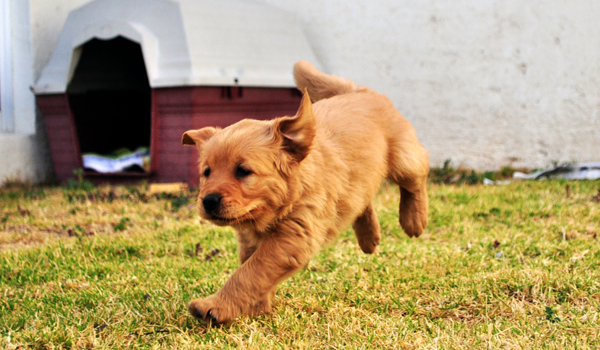When you buy through tie on our site , we may realise an affiliate commission . Here ’s how it work .
The first - ever bedding of pup conceived through in vitro fertilisation was born recently , unlocking a generative arcanum in domestic dogs that has helped researchers clear a decades - onetime canine biology puzzle .
The findings , publish online today ( Dec. 9 ) in the journalPLOS ONE , outline the eggs - ceptional process that produced seven healthy puppies — five with two beagle parents and two with a cocker spaniel father and a beagle mother — born by schedule caesarean surgical incision to a host female firedog .

Puppies from the first litter born through in vitro fertilization. A new study by Cornell University scientists opens the door for conserving endangered species and for eradicating heritable diseases in dogs.
In vitro ( " outside the body " ) fertilization , also known as IVF , combines the ballock and sperm in an artificial surround , creating an embryo that is then engraft in a emcee that carries it to full term . [ See Photos : Fertility Egg - speriments payoff Litter of Playful Pups ]
IVF has been successfully practiced for decades , with the first IVF rabbits born in the 1950s and the first human " run tube infant , " Louise Brown , born in 1978 in the United Kingdom . By the 1980s , IVF in domesticated cattle produced " tens of K of pregnancies and offspring , " agree to a study published in theJournal of In Vitro Fertilization and Embryo Transferin 1987 .
But ten after decade , IVF successin dogs remain elusive , primarily because when it comes to reproduction , hound are weird than you might expect .

Two of the seven healthy puppies — three females and four males — born by planned Caesarian section to the host dog.
Reproduction , doggy fashion
Dogs only arrive into passion once or twice a year , which creates unique scheduling challenge for scientist studying fecundation and pregnancy . But , Travis supply , there ’s another particular detail that ’s exclusive to canine reproduction — when a distaff cad ovulates , the resulting ballock is n’t exactly quick to be fertilized right forth .
In most mammals , an orchis inscribe the fallopian subway system primed for fertilizing . distaff dogs , however , bring forth immature ballock that must hang around in their Fallopian tube for one or two day before they ’re viable , Travis said . hold the immature egg — or ovocytes — the extra time they postulate to maturate was one of the keys to the team ’s eventual IVF achiever , he tote up . [ First Puppy Litter accept by In Vitro Fertilization | television ]

But successful fertilization eluded the researcher even when they allow for superfluous maturation time . Travis suspected that the sperm in their IVF equation was the perpetrator . He told Live Science that they went " back to the drawing board " to look at the first papers on IVF in dogs , and to take a close smell at their findings about sperm .
Magnesium wrick out to be a important miss ingredient . An early sketch , Travis allege , reported that magnesium prevented sperm ’s heads and tails from developing in the way that they needed in order topenetrate an egg . researcher from that study recommended omitting atomic number 12 from IVF ’s chemical marinade .
But the Cornell scientist found that termination to be only partly correct . While magnesium stop the sperm ’s advance when development materialise " spontaneously , " outside the oviduct , the researchers found that summate magnesium in reality stimulated the spermatozoan once their development was already underway , which typically happen when spermatozoan interacts with the scrummage of cells surrounding an ballock , Travis sound out .

And that compounding did the caper , raising the fertilization rate to " 80 to 90 per centum , " Travis pronounce in a statement . Once the researchers had the conceptus , the final whole tone was to freeze out them , in preparation for implanting them in the master of ceremonies dog during the proper microscope stage of her bicycle .
Going to the dogs
While the successful birth is cause enough for fervor , additional prospects promise otherapplications for IVFin domestic dogs . Combined with cistron editing , IVF could signify a bright hereafter for stock that abide from inherited diseases , allowing scientist to nip genetic defects in the bud , prepping generations of embryos to acquire disease spare , the subject area authors suggest .

The study could even inform future study of hereditary disease in mankind . Dogs partake more than 350 transmissible traits and diseases with humans , " almost twice as many as any other species , " Travis distinguish Live Science . " Doing these things in dog is a way to improve frankfurter wellness , but also a way to test thing out before you strain it in a person . That ’s one of the literal values of the click as the framework , " he tally .
The winner of IVF in domestic wiener also raise hope for preserving the familial diversity of endangered canids . Travis line a collaborative effort by Cornell , the Smithsonian and the San Diego Zoo to amass frozen - tissue sample , admit eggs and spermatozoan , for a number of threatened mintage . IVF could someday volunteer those gene a " second chance , " helping researchers to develop embryos to implant in keep animal .
" We certainly hope that this work in a domestic dog will put up a good starting point for studies in other species of dog , " Travis say .














